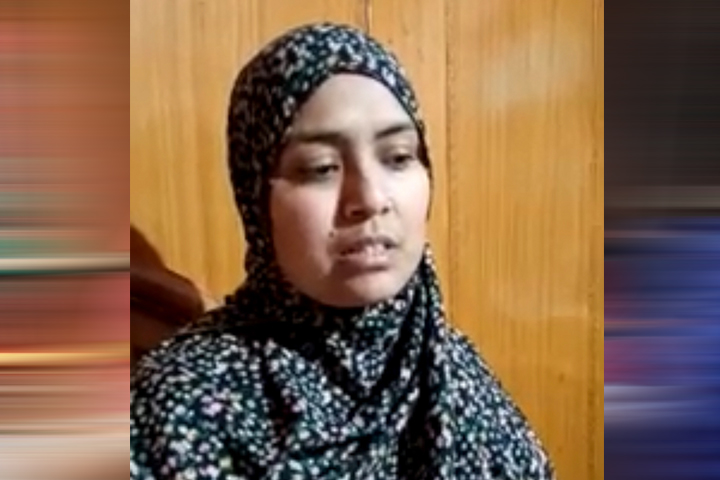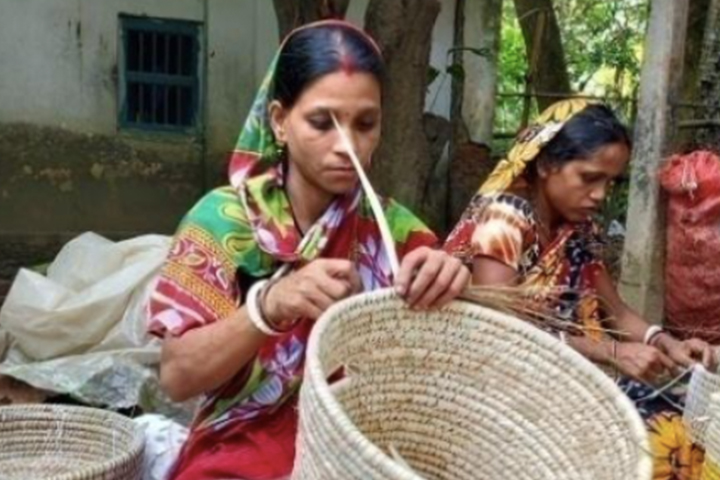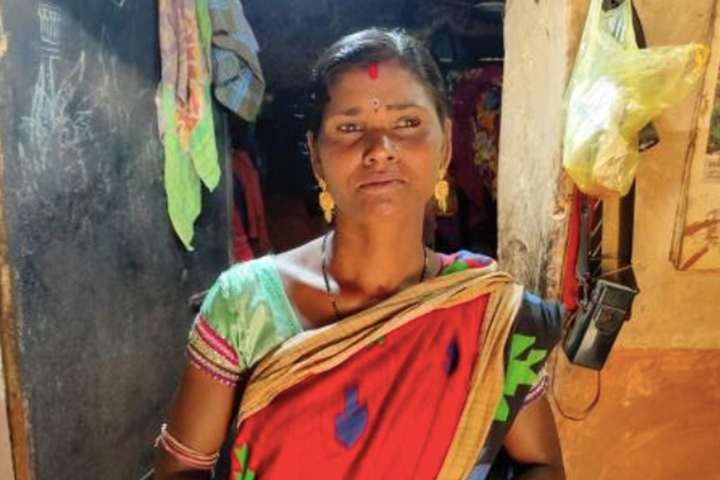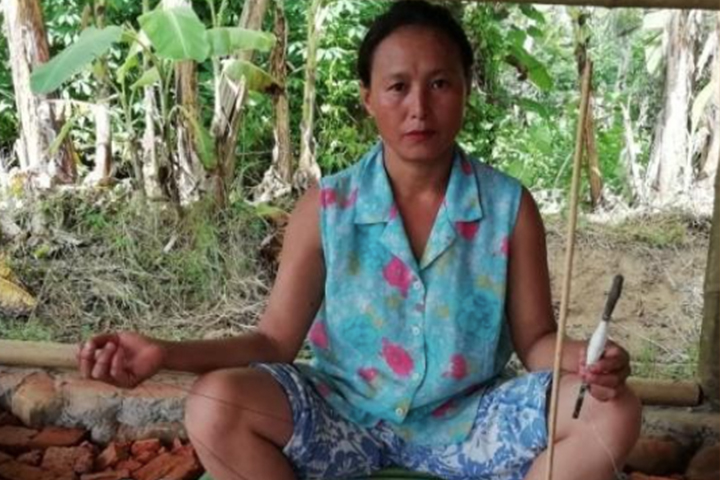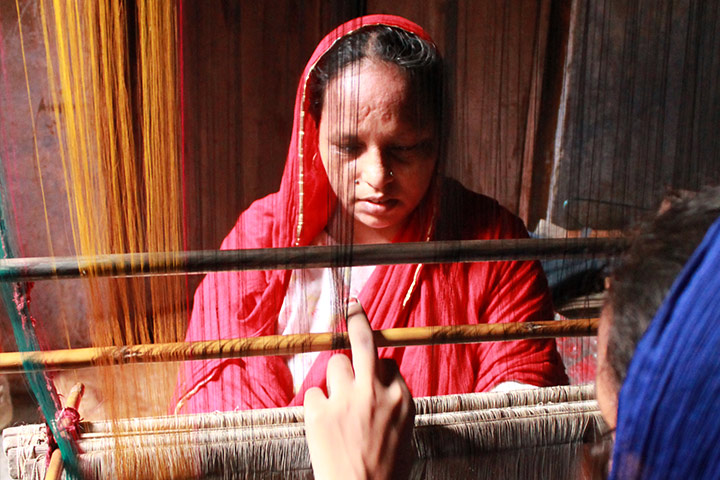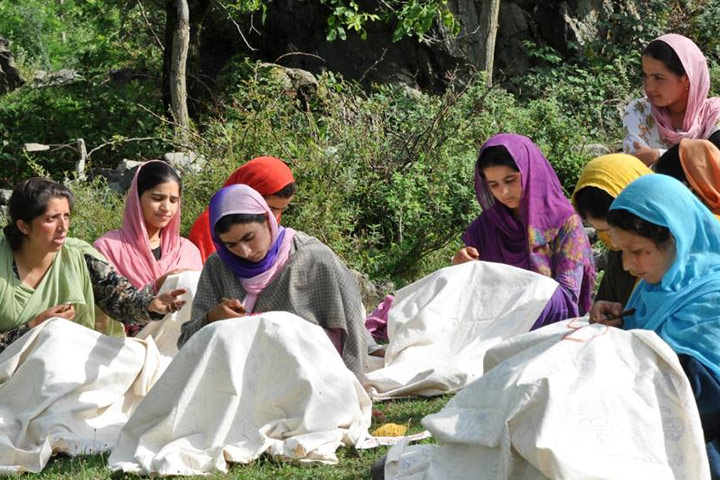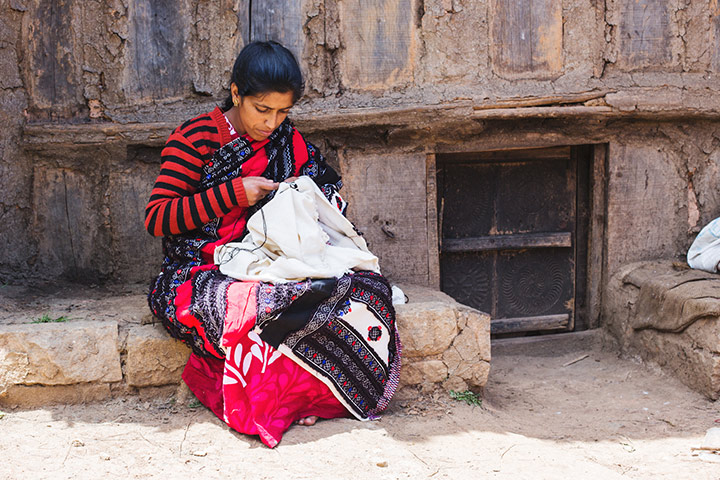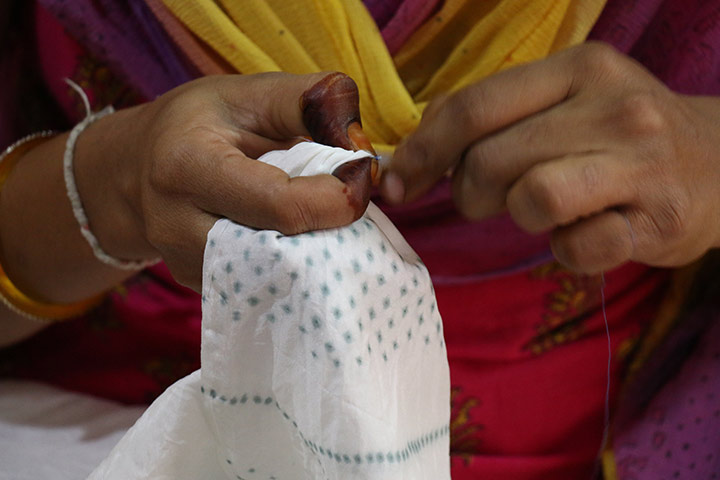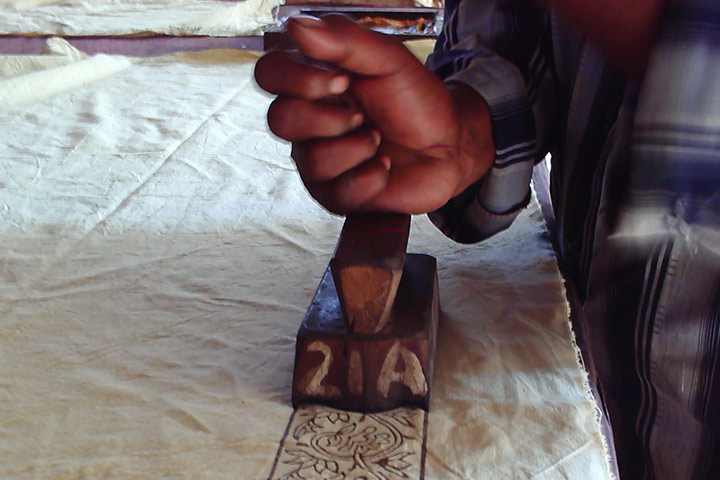
Shenaz Bano, Kota Weaver, Kota Women Weavers Organisation
Kaithoon is home to the renowned fabric of Kota Doria- a fine fabric made of a blend of silk and cotton has a unique check-like pattern. AIACA works in Kota with the mission of enabling Kota Women Weavers Organisation (KWWO), a registered Society of more than 1000 women weavers belonging to the Ansari community, to access greater market share and profit through facilitation of business support services, skill upgradation, design innovation and effective organisation management.
Kadambini Dey, Artisan, Balasore Shobai Sangha
Kadambini Dey, is a woman sabai grass artisan from Sarpunja village in Baliapal block, Balasore, Odisha. She comes from a family of 5 members which includes her husband, a son, her mother- in-law and father-in-law. Her son is in 9th standard and her husband is a disbaled person thus, leaving her as the sole bread earner in the family. Kadambini has received formal education upto 8th standard. Prior to her marriage, Kadambini was not versed with the craft. However, after her marriage, in order to manage household finances, she started practicing the craft of making products using locally sourced sabai and date palm. She additionally worked at a small agricultural farm of her in-laws.
Mansi Pradhan, Individual Dokra Craft Artisan.
Mansi Pradhan is a Dokra Craft Artisans from Sadeibaerni Village of Dhenkanal District. She is 30 years old and has 8 members in her family. All the family members are engaged in the dokra Craft works and earn their livelihood through these crafts. They are experts in making Dokra Tortoise and Fish. She gets regular orders from a local NGO from Bhubaneswar. Though her house is being electrified, there are rampant cases of frequent power cuts which are around 3-4 times in a day or 14-15 hours of power cuts. This resulted in less productivity of her work, she only managed to work on order during the day time. Even her children could study during the night.
Ventanulu, Loin Loom Weaver, Nagaland
Ventanulu, is a woman loin loom weaver from Diezephe, Nagaland. She comes from a family of 7 members which includes her husband and five children. Her husband is a farmer and all her children are all receiving their education. She has been practicing the craft of loin loom for the past 20 years. However, she wasn’t well versed with the crucial technical aspects such as sizing with meters, product finishing, etc. This was one of the biggest drawbacks that kept the cluster from national and global markets.
Handloom Weavers of Mubarakpur
Mubarakpur is an ancient handloom weaving cluster with evidence of fine silk weaving being practiced here since the 14th century. Even the famous medieval traveller Ibn Batuta had praised the high quality fabrics being made in Mubarakpur in his travel diaries. A luxurious satin weave with zari motifs had historically been the highlight of this area but over the years the handloom skill was lost leading to a decline in the fame of Mubarakpur.
Women embroiders of Kashmir
In Kulgam district of Kashmir a craft based enterprise development programme was undertaken since 2010 wherein the actual training of the identified beneficiaries in various skills were carried out between 2010- 2011.
Toda and Lambadi embroiders of Tamil Nadu
In another intervention for Toda and Lambadi embroidery in Tamil Nadu, AIACA has been working with about 250 artisans since 2011 (a 3 year project) and has carried out capacity building and training leading to organization development, legal structuring, design innovation, product development. Training on packaging and marketing has also played a critical role in improving business in a significant way. Additionally, new tools and techniques for production have also been introduced.
Tie and Dye artisans of Rajasthan
AIACA has consistently been working with the craft enterprise, DishaShekhawati in Sujangarh, Churu District, since 2012 when it became a Craftmark member. Many of the women in Sujangarh were left to provide for themselves when their husbands migrated to Gulf countries in search of work. Disha began working with 40 such women and trained them in the craft of Tie and Dye. AIACA has carried out several interventions in Sujangarh including chemical and natural dye training, design development, training for organizational development, production management, and business and financial management.
Handblock printing artisans in Rajasthan
About 360 women from 4 villages in Ranthambore, SawaiMadhopur District, form part of the enterprise, DastkarRanthambore and practice the crafts of patchwork, block printing, tie-dye, sequin work, pottery, leather, and lac bangles. DastkarRanthambore was a combined initiative of Dastkar and Ranthambore Foundation to resettle communities in the SawaiMadhopur area of Rajasthan who had lost access to wood, water, and farming lands due to the creation of Ranthambore National Park. DastkarRanthambore joined as a Craftmark member in 2006.

